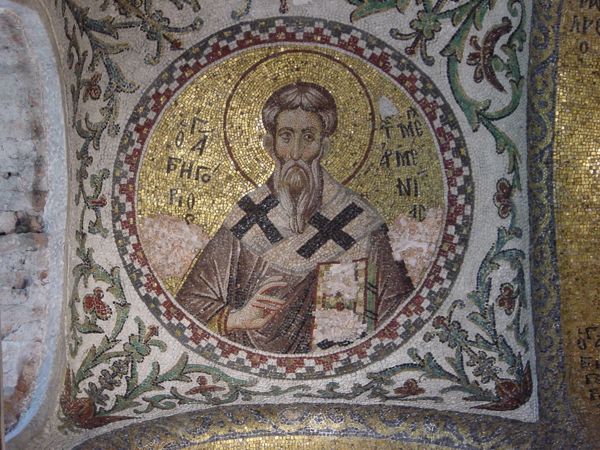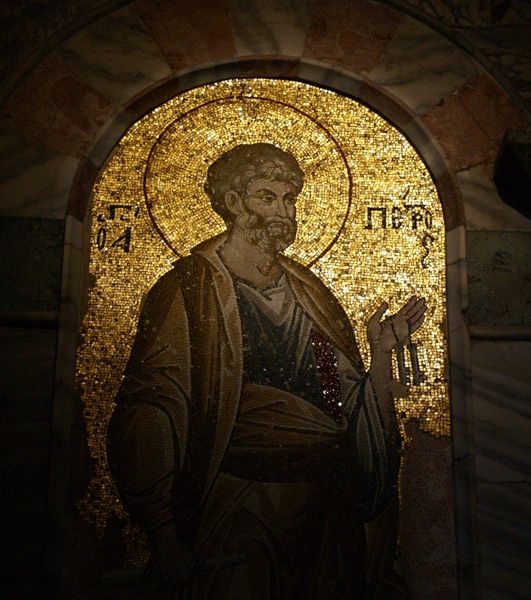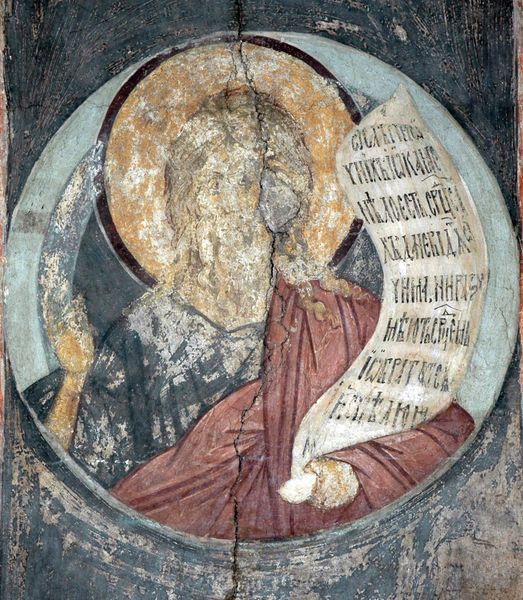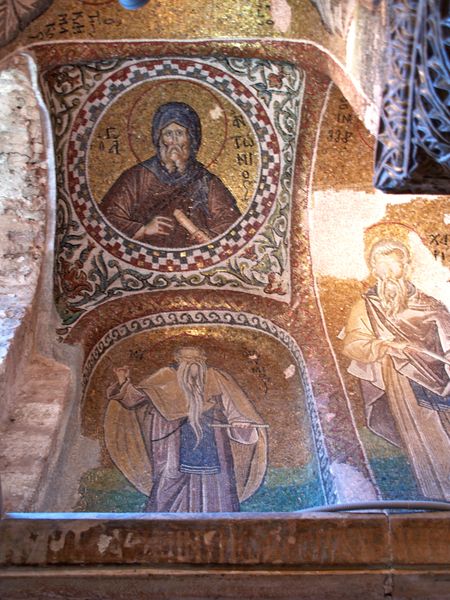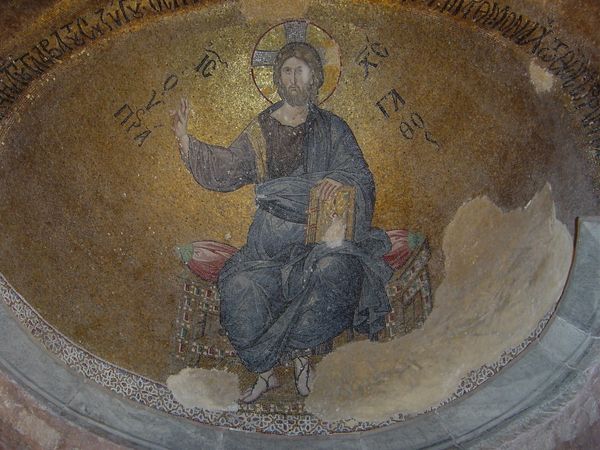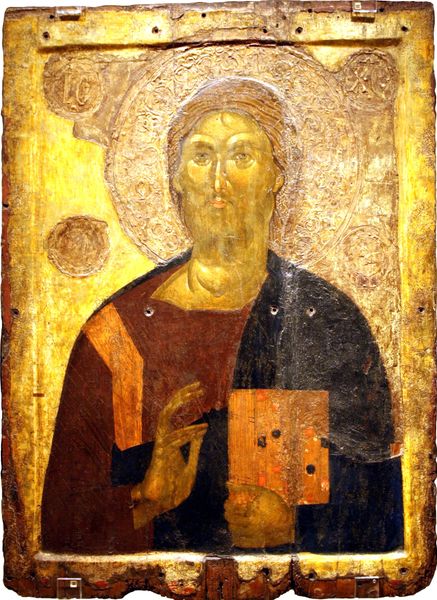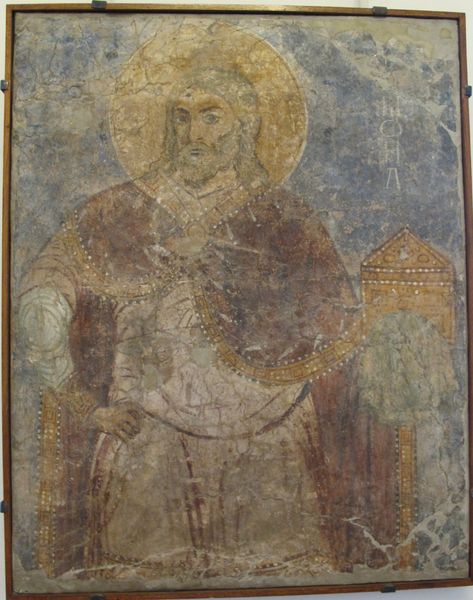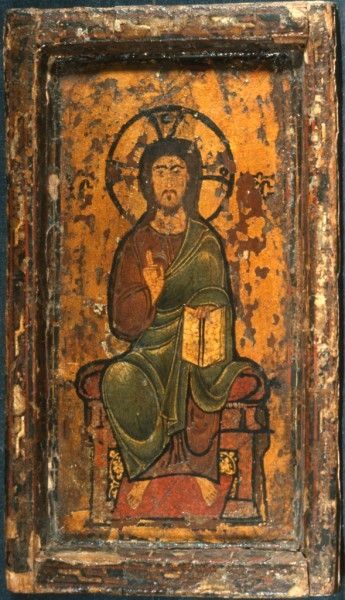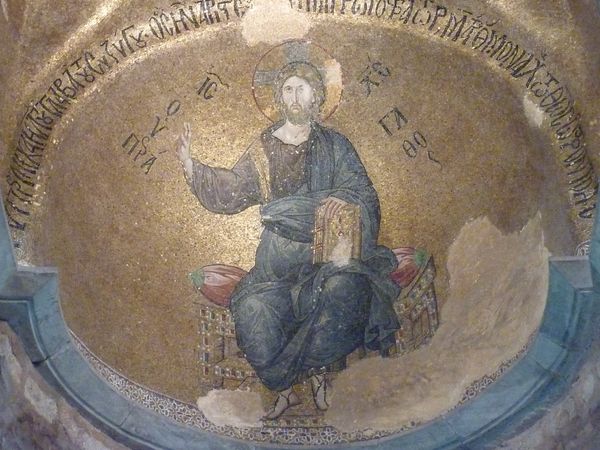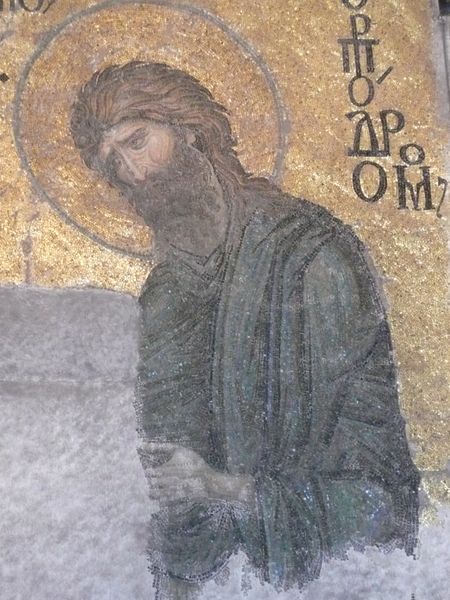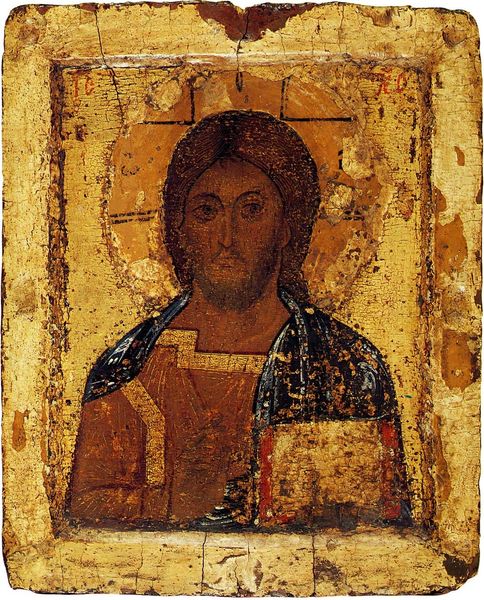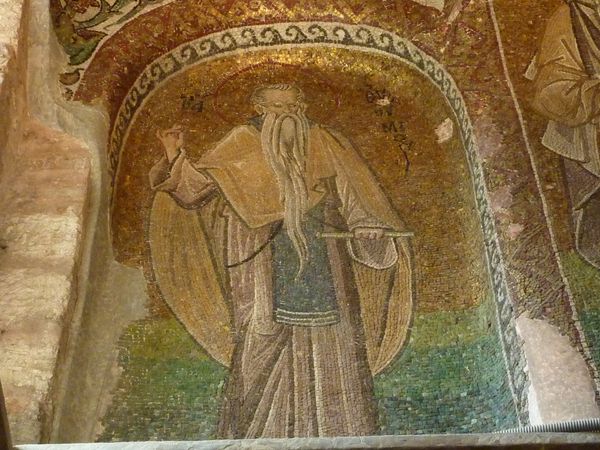
mosaic
#
portrait
#
mosaic
#
byzantine-art
#
medieval
#
holy-places
#
figuration
#
historic architecture
#
historical building
Copyright: Public domain
Editor: Here we have a mosaic of 'S. Antonio', created around 1300. The setting in Pammakaristos Church in Istanbul really makes you think about its history. What first strikes me is the way his gaze seems both distant and incredibly present. How do you interpret this work? Curator: Looking at this image of S. Antonio, I immediately consider the politics embedded within Byzantine art. These mosaics were not simply decorative; they were powerful visual statements affirming religious and imperial authority. His gaze, as you noted, pierces through time. Doesn't it make you think about how power is visualized and communicated in different cultural contexts? Editor: Yes, it does! The intense gaze and the detail in the mosaic – considering each piece was placed individually– speak to a profound dedication to both the craft and the subject. Is it fair to say it represents authority? It feels almost devotional, in a personal way, not just top-down. Curator: I think that's an insightful observation. The devotional aspect is key. How do you think the artist navigates the expectations of both spiritual and political power? We can consider that there's an active dialogue constantly negotiated by the person commissioning the art and the individual creating the art. What about his clothing, what statement does it make? Editor: Good point. He seems humbly dressed despite his obviously important role. His cloak, combined with the scroll, suggests a learned, but also ascetic figure. Maybe a model for the viewer to look up to. Curator: Exactly! And the location…Istanbul, a site of cultural intersection. The choice of a mosaic, the specific materials, everything is intentional. The art itself almost becomes a political statement when displayed in its specific location! Editor: This has given me so much to think about – the confluence of political, religious, and artistic intentions behind such works! Curator: Precisely. By situating it within its historical, religious, and cultural context, we appreciate how much more there is to an artwork than simply what meets the eye.
Comments
No comments
Be the first to comment and join the conversation on the ultimate creative platform.
